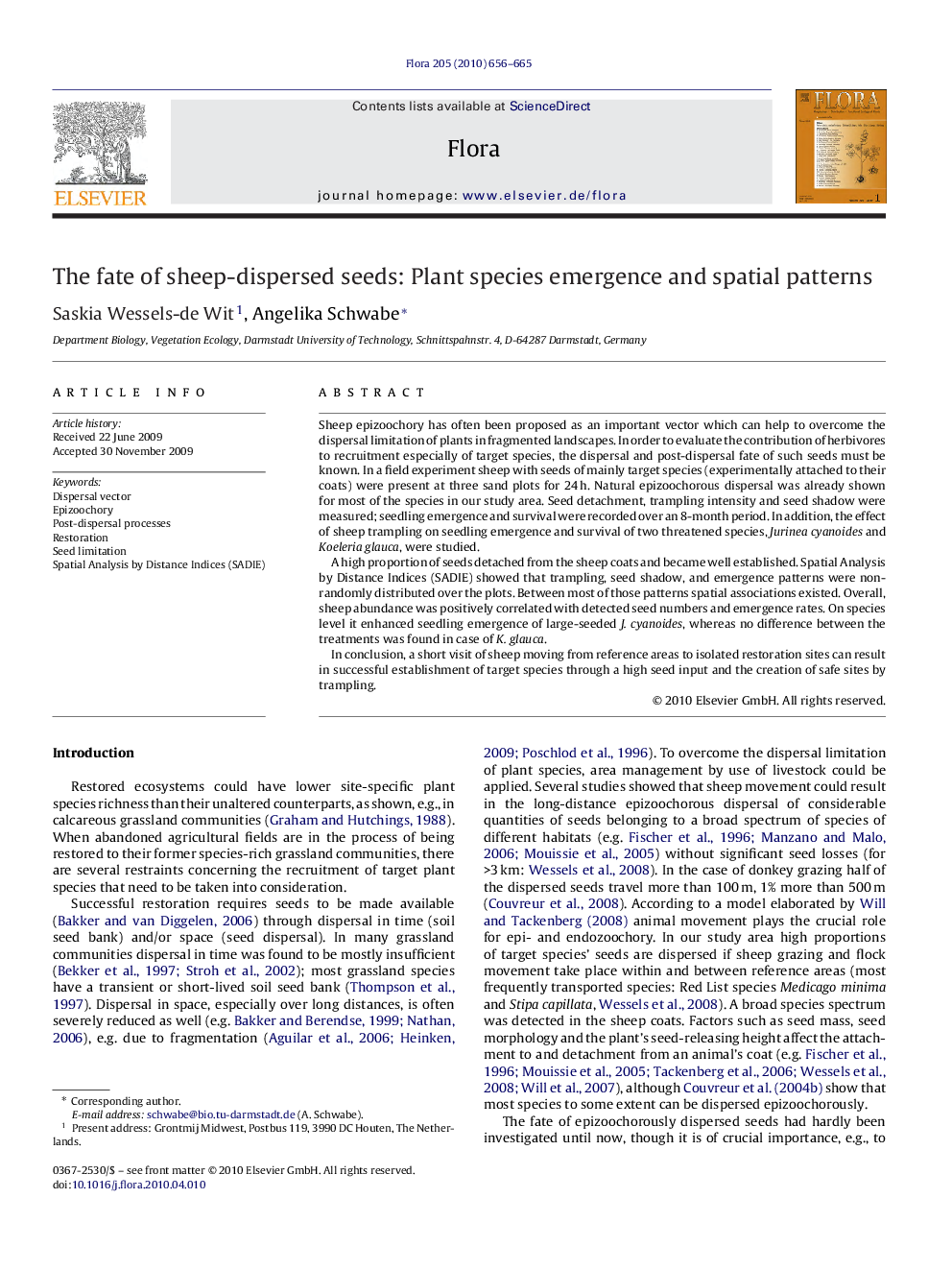| Article ID | Journal | Published Year | Pages | File Type |
|---|---|---|---|---|
| 2180000 | Flora - Morphology, Distribution, Functional Ecology of Plants | 2010 | 10 Pages |
Sheep epizoochory has often been proposed as an important vector which can help to overcome the dispersal limitation of plants in fragmented landscapes. In order to evaluate the contribution of herbivores to recruitment especially of target species, the dispersal and post-dispersal fate of such seeds must be known. In a field experiment sheep with seeds of mainly target species (experimentally attached to their coats) were present at three sand plots for 24 h. Natural epizoochorous dispersal was already shown for most of the species in our study area. Seed detachment, trampling intensity and seed shadow were measured; seedling emergence and survival were recorded over an 8-month period. In addition, the effect of sheep trampling on seedling emergence and survival of two threatened species, Jurinea cyanoides and Koeleria glauca, were studied.A high proportion of seeds detached from the sheep coats and became well established. Spatial Analysis by Distance Indices (SADIE) showed that trampling, seed shadow, and emergence patterns were non-randomly distributed over the plots. Between most of those patterns spatial associations existed. Overall, sheep abundance was positively correlated with detected seed numbers and emergence rates. On species level it enhanced seedling emergence of large-seeded J. cyanoides, whereas no difference between the treatments was found in case of K. glauca.In conclusion, a short visit of sheep moving from reference areas to isolated restoration sites can result in successful establishment of target species through a high seed input and the creation of safe sites by trampling.
